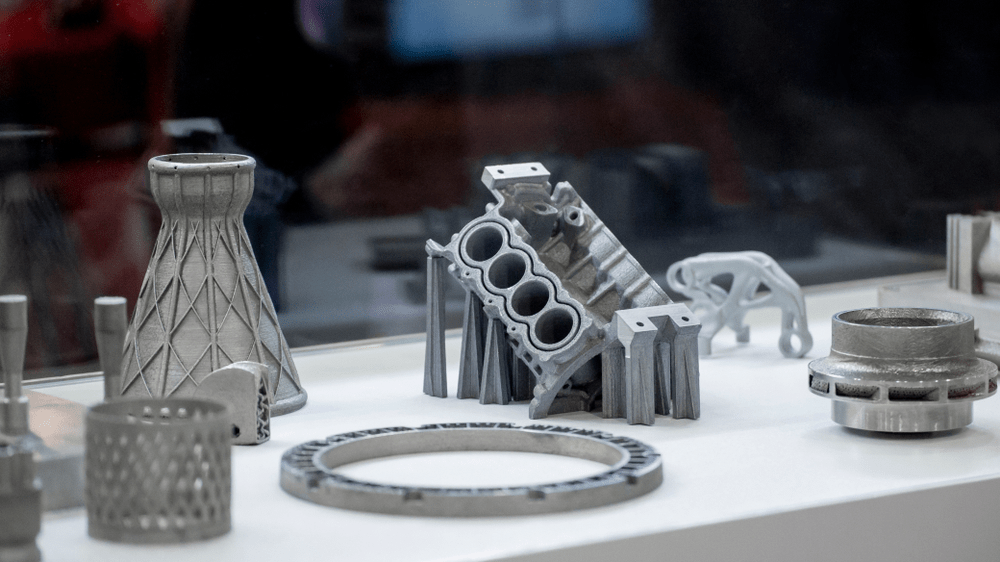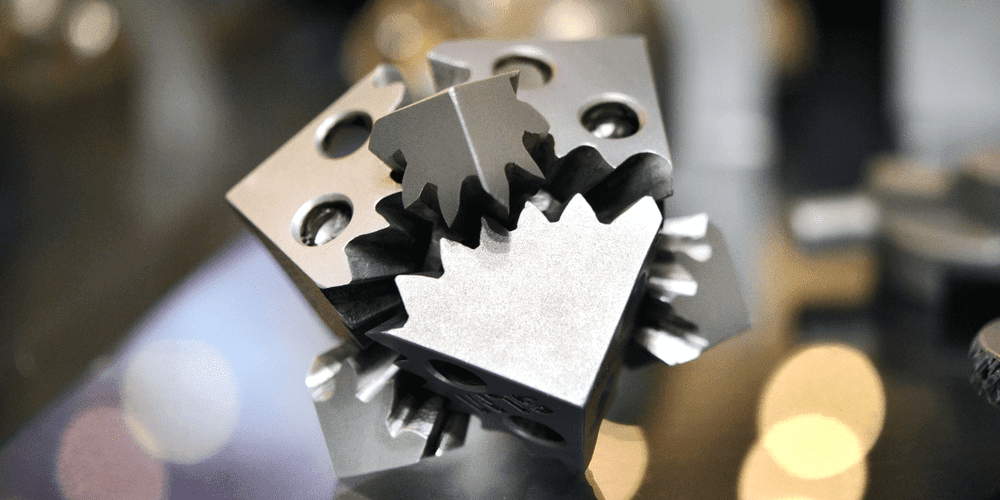Top Strategies for Automating Metal Additive Manufacturing
3D printing for metal, or metal additive manufacturing, has revolutionized the production of metal parts. The process involves building up metal parts layer by layer using a 3D printer and metal powders, offering manufacturers greater design freedom and flexibility. However, automating the process of metal additive manufacturing can be a challenge. This article by KVM Automation will explore the top strategies for automating this process and how they can help you achieve better results and greater efficiency.
What is Metal Additive Manufacturing?

Metal additive manufacturing is creating metal parts using a 3D printer. The printer builds the part layer by layer using metal powders, which are melted and bonded using a laser or electron beam. The metal powders used in this process are typically made from titanium, stainless steel, or aluminum, although other metals can also be used.
The metal additive manufacturing process is highly automated, with the 3D printer controlled by computer software. This allows for precise control over the production process, leading to accurate and consistent parts.
Additive Manufacturing of Metals
The additive manufacturing of metals is a relatively new technology, and still much to learn about. However, as more manufacturers adopt this technology, they realize that automating the process can increase efficiency, reduce costs, and improve the overall quality of their parts.
One of the key benefits of automating metal additive manufacturing is that it reduces the need for manual intervention in the production process. This minimizes the risk of human error, ensuring that each part is produced to the same high standard.
Another advantage is that it reduces the time required to produce a part. Manufacturers can produce parts more efficiently and at lower costs with fully automated systems, resulting in lower production costs.
Top Strategies for Automating Metal Additive Manufacturing

Invest in the Right Equipment
Investing in the right Equipment is the first step in automating metal additive manufacturing. This includes a high-quality 3D printer and the necessary software to control printing. Metal powders and the size and complexity of the parts you plan to print should be considered when choosing a 3D printer.
Implement Quality Control Measures
Quality control is critical to any manufacturing process, and metal additive manufacturing is no exception. To ensure that each part is produced to the highest standard, it is important to have a robust quality control system in place. This system should include regular monitoring and testing of the production process to identify problems or issues early on and make necessary adjustments before they become more significant.
Streamline Workflow
Another important strategy for automating metal additive manufacturing is to streamline the workflow. This can be done by using software that automates the production process, reducing the need for manual intervention. This leads to a consistent production process, minimizing the risk of human error and improving the overall quality of the final product.
Continuously Monitor and Adjust the Process
Continuous monitoring and adjustment of the metal additive manufacturing process are crucial to ensuring it remains efficient and cost-effective. This can be done using software that tracks the production process in real-time and provides manufacturers with the necessary data to make adjustments.
Partner with a Metal Additive Manufacturing Expert
An expert can help you understand the latest technology and guide you on the best tools and techniques for automating your process. They can also provide training and support, helping you to optimize your system and achieve the best results.
Additional details on automating metal additive manufacturing

Quality control algorithms: Quality control algorithms can be implemented in the software used for metal additive manufacturing. These algorithms can detect and automatically correct any deviations from the desired production process, improving the accuracy and consistency of each part.
Material handling systems: Material handling systems can help automate the feeding of metal powders into the 3D printer, reducing the need for manual intervention. The process is more efficient and less prone to human error and contamination.
Robotic systems: Robotic systems can automate the post-processing of metal parts produced using additive manufacturing. This includes tasks such as removing support structures, polishing, and finishing. By using robots, manufacturers can ensure consistent quality and reduce the risk of human error.
Predictive maintenance: Predictive maintenance can be used to monitor the performance of the 3D printer and identify potential issues before they become problems. This allows manufacturers to make repairs or adjustments before a failure occurs, reducing downtime and improving efficiency.
Integration with other systems: Automating metal additive manufacturing can be further optimized by integrating it with other systems in the manufacturing process. For example, the data generated by the 3D printer can be fed into other systems, such as a Material Requirements Planning (MRP) system, allowing for greater visibility and control over the production process.
Process simulation: By using process simulation software, manufacturers can optimize the metal additive manufacturing process before production begins. This can help reduce the time and cost required to produce parts and improve the accuracy of the final product.
Machine learning: Machine learning algorithms can analyze data from the metal additive manufacturing process and predict future performance. This can help identify areas for improvement and optimize the process over time.
Smart sensors: Smart sensors can be integrated into the 3D printer to monitor the real-time process. As a result, the process can be adjusted, and the final product’s quality can be improved.
Supply chain integration: Integrating metal additive manufacturing into the larger supply chain can help improve efficiency and reduce costs. For example, by using real-time data from the 3D printer, manufacturers can optimize production schedules and reduce waste.
Collaboration with industry experts: Collaborating with industry experts can help manufacturers stay up-to-date with the latest developments in metal additive manufacturing. These experts can guide the latest technologies and best practices, helping manufacturers continually improve the process.
By incorporating these additional strategies, manufacturers can further optimize the metal additive manufacturing process and achieve even greater results. It’s important to note that automating metal additive manufacturing is an ongoing process and requires continuous improvement and innovation.
Conclusion
Metal additive manufacturing is a rapidly growing technology that offers many benefits over traditional metal manufacturing methods. Automating the process can increase efficiency, reduce costs, and improve the quality of your parts. Investing in the right Equipment, implementing quality control measures, streamlining your workflow, continuously monitoring and adjusting the process, and partnering with a metal additive manufacturing expert can ensure you are getting the most out of this technology.
In conclusion, metal additive manufacturing is a highly advanced and sophisticated technology that benefits manufacturers. Automating the process can achieve greater efficiency, improved quality, and reduced costs. With the right strategies in place, metal additive manufacturing will become an increasingly important part of the manufacturing landscape in the future.
Connect with KVM Automation in California today and let’s integrate the power of automation to your industrial business.

